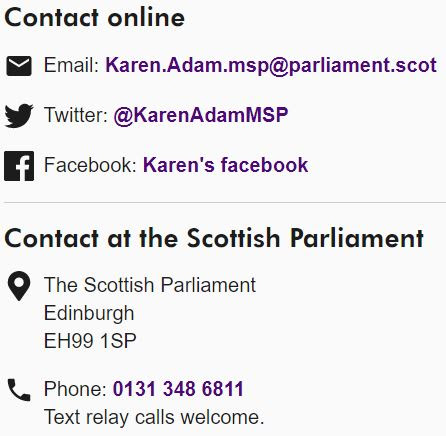Locations of bird of prey poisoning incidents in Scotland in 2011 are revealed in the latest ‘hotspot map’, which is published today.
The maps published by the Partnership for Action Against Wildlife Crime (PAW) outline the number and general location of confirmed illegal poisonings in 2011, and cumulative figures for 2007 to 2011. A total of 10 poisoning incidents were recorded in 2011 resulting in 16 dead birds of prey including 7 buzzards, four red kites and a golden eagle. This compares to 22 incidents and 28 birds of prey poisoned in 2010.
Environment Minister Stewart Stevenson said:
“This is the fourth year we have published these maps and I very much welcome the reduction in poisoning numbers. I hope this proves to be the beginning of a continuing reduction in such cases, leading to the end of this outdated, dangerous and cruel practice.
“Birds of prey are a key part of our ecosystems and a magnificent spectacle in our countryside. They are valued by locals and visitors alike.
“However a small minority continues to persecute them for their own selfish ends. I hope we are beginning to see a change in attitude. In the meantime we will continue to work with our partners in PAW Scotland to tackle poisoning and other forms of wildlife crime.”
Duncan Orr-Ewing, Head of Species and Land Management for RSPB Scotland, said:
“We hope that this is the start of a downward trend in illegal poisoning in Scotland, which in time should also be reflected in an increase in the populations and ranges of some of our most vulnerable species, including golden eagles, hen harriers and red kites.
“The annual PAWS maps highlighting the hotspots for the illegal poisoning of birds of prey in Scotland, are now one of the key tools used for targeting the enforcement resources at the right places. At the same time, this targeted approach also protects the reputation of the many responsible land managers in Scotland, who do not tolerate crimes against birds of prey on their land. We commend the work of Science and Advice for Scottish Agriculture, and Scottish Government, who are working with RSPB Scotland, Scottish Land and Estates, and other PAWS partners, to tackle wildlife crime in all its forms.”
Douglas McAdam, Chief Executive of Scottish Land & Estates, said:
“These statistics reveal the lowest number of cases on record for confirmed illegal poisoning of birds of prey since we started producing these hot spot maps.
“This is very welcome and encouraging news and clearly demonstrates substantial progress in this area. From a high of 34 birds of prey illegally poisoned in 2006 we have seen a significant drop to only 16 in 2011, a drop of over 50 per cent.
“Last year we have seen a 42 per cent decline from 28 cases in 2010 and this is even more significant as it occurs at a time when the Government laboratories at SASA are testing more intensively. These results illustrate the effectiveness of partnership working and a proper evidence based approach to this area of crime. The map for 2011 will also give a clear focus for future partnership work to continue to eradicate this area of criminality through effective prevention and, where required, enforcement activity.”
Superintendent Ewen West of Tayside Police who chairs the Raptor Persecution Priority Delivery Group said:
“The reduction in the numbers of Birds of Prey poisoned in 2011 is very good news which should be welcomed by all that wish to see such illegal practices erradicated. This reduction in poisoning incidents is in my view reflective of the ongoing work in relation to the prevention and investigation of such criminality.
“This work clearly requires to continue until the poisoning of Birds of Prey is completely stopped. The RPPDG continues to develop and promote good practice in terms of preventing poisoning criminality and is working hard with all PAW partners and other interested groups and individuals to ensure that these illegal practices are stopped.”
Anyone who finds a dead bird of prey, and suspects it may have been poisoned, should contact the police as per the PAW Scotland guidance.
PAW Scotland is the Partnership for Action against Wildlife Crime in Scotland. PAW Scotland membership encompasses a wide range of bodies with an interest in tackling wildlife crime including conservation, land management, shooting and law enforcement organisations.
The maps do not show exact location of incidents, in recognition of the fact that birds may travel some distance after exposure to the poison. The map therefore applies an obscurity factor to avoid any inference being drawn for the exact point of discovery of the bird, but still allows an overview of the worst affected areas.
Related information
This web site will no longer be updated save to correct errors.


 Born in 1946 and brought up in Cupar, Fife, I was educated at the local school -
Born in 1946 and brought up in Cupar, Fife, I was educated at the local school - 

















